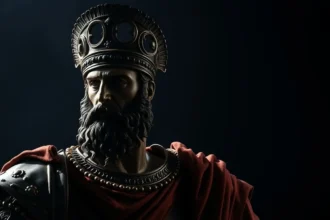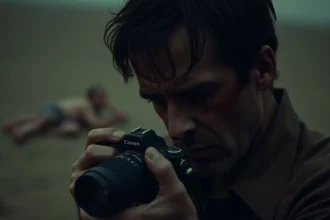Benito Mussolini, the architect of fascism, played a pivotal role in shaping 20th-century Italy. As the country’s dictator from 1922 to 1943, he led with a mix of charisma, propaganda, and repression, leaving behind a controversial legacy. Here’s a concise look at his life, rise, and eventual fall.
The history of dictators is the history of the struggle between ambition and the fragility of human governance
Adapted from reflections on totalitarianism by Hannah Arendt.
From Childhood to Revolutionary Ideas
Born on July 29, 1883, in Predappio, Italy, Benito Amilcare Andrea Mussolini grew up in a politically charged household. His father, Alessandro Mussolini, was a socialist blacksmith and ardent atheist, while his mother, Rosa Maltoni, was a devout Catholic schoolteacher. This juxtaposition of ideologies had a lasting impact on young Benito, who displayed a rebellious streak and an early interest in politics.

Mussolini was a bright but unruly student, often clashing with authority figures. After training as a schoolteacher, he began his career in education but quickly turned to journalism and politics. By the early 1900s, he had embraced socialism, aligning himself with the Italian Socialist Party (PSI). Mussolini’s fiery rhetoric and sharp intellect propelled him to prominence, and he became the editor of Avanti!, the party’s newspaper.
World War I: A Turning Point
The outbreak of World War I in 1914 marked a critical juncture in Mussolini’s life. Initially a pacifist, he shifted his stance, advocating for Italy’s participation in the war to fulfill nationalist ambitions. This controversial position alienated him from the Socialist Party, leading to his expulsion. However, the war also awakened his vision for a new political ideology—one that would blend nationalism, authoritarianism, and militarism.
Mussolini served briefly on the front lines, where he was injured and discharged. The war experience further solidified his belief in the need for a strong, centralized state to restore Italy’s glory.
The Birth of Fascism
In the aftermath of World War I, Italy faced economic instability, political fragmentation, and widespread discontent. Sensing an opportunity, Mussolini founded the Fasci di Combattimento in 1919, a paramilitary movement that sought to unify Italians under a new ideology: fascism.

Fascism rejected liberal democracy, socialism, and class conflict, instead emphasizing nationalism, militarism, and the supremacy of the state. Mussolini’s charismatic leadership, combined with his adept use of propaganda and violence, helped him gain the support of industrialists, veterans, and the middle class.
By 1921, Mussolini had transformed his movement into the National Fascist Party, securing a foothold in Italian politics. The pivotal moment came in October 1922, when Mussolini and his followers staged the March on Rome. The threat of civil unrest compelled King Victor Emmanuel III to invite Mussolini to form a government, making him the youngest Prime Minister in Italian history.
Mussolini’s Regime: The Fascist Experiment
Once in power, Mussolini wasted no time consolidating his authority. By 1925, he had dismantled Italy’s democratic institutions, declared himself Il Duce (The Leader), and established a totalitarian regime.
Mussolini was a master of the theater of politics, but his visions were too grandiose for the reality of his nation’s capabilities
F2E
Key aspects of Mussolini’s rule included:
- Economic Corporatism: Mussolini introduced a corporatist economic model, aiming to mediate between labor and capital through state-controlled syndicates. While initially lauded as innovative, it failed to address Italy’s underlying economic problems.
- Militarization and Imperialism: Mussolini pursued an aggressive foreign policy to expand Italy’s territorial ambitions. In 1935, he ordered the invasion of Ethiopia, a campaign that drew international condemnation but boosted his domestic popularity. By 1939, Mussolini had also annexed Albania.
- Propaganda and Repression: Mussolini’s regime relied heavily on propaganda to glorify his leadership and the fascist state. Dissent was crushed through censorship, secret police, and political purges.
- Social Policies: Mussolini promoted traditional family values, encouraged high birth rates, and sought to align Italian culture with fascist ideals. However, these policies often clashed with modern societal trends.
Alliance with Hitler and World War II
Mussolini’s alliance with Nazi Germany proved to be a turning point in his rule. Initially cautious about Adolf Hitler, Mussolini eventually aligned Italy with Germany, forming the Axis powers alongside Japan. The Pact of Steel, signed in 1939, committed Italy to supporting Germany in the event of war.
When World War II broke out, Mussolini hoped to expand Italy’s influence, but his military campaigns in Greece, North Africa, and the Soviet Union ended in disaster. Italy’s defeats eroded public confidence in his leadership and strained relations with Germany.
Downfall and Execution
By 1943, Allied forces had invaded Sicily and were advancing into mainland Italy. Facing mounting pressure, the Grand Council of Fascism voted to remove Mussolini from power. He was arrested and imprisoned, but German commandos freed him in a daring rescue.

Mussolini was installed as the leader of a puppet state, the Italian Social Republic, in northern Italy. However, his control was nominal, and his government was plagued by internal dissent and Allied advances.
In April 1945, as the Allies closed in, Mussolini attempted to flee to Switzerland with his mistress, Clara Petacci. He was captured by Italian partisans near Lake Como, executed by firing squad on April 28, 1945, and his body was publicly displayed in Milan—a grim symbol of his fall from power.
The Path to Becoming Il Duce
Mussolini’s transformation from a rebellious schoolteacher to a dictator was fueled by a mix of personal ambition, political pragmatism, and historical circumstances. His socialist upbringing instilled in him a deep understanding of mass movements, while his wartime experiences pushed him toward nationalism. By exploiting Italy’s post-war chaos and discontent, Mussolini positioned himself as the savior of the nation.
His rise was also facilitated by the failures of Italy’s liberal political system, which could not effectively address economic turmoil or the growing fears of communism. Mussolini’s charisma, propaganda machine, and use of violence enabled him to outmaneuver opponents and consolidate power.
Legacy
Mussolini’s legacy remains a subject of intense debate. While some admire his charisma and vision for a unified Italy, most view his regime as a cautionary tale of authoritarianism, militarism, and the dangers of unchecked power.
His rise and fall highlight the fragility of democratic institutions and the consequences of political extremism. Mussolini’s era serves as a reminder of the importance of safeguarding freedom, tolerance, and accountability in governance.
Breaking Down the Barrier
Benito Mussolini’s life was a complex journey from socialist firebrand to fascist dictator. His ambition reshaped Italy and influenced global politics, but his policies ultimately led to war, suffering, and national humiliation. Understanding Mussolini’s trajectory offers valuable lessons about the forces that drive political movements and the enduring need to defend democratic principles.
Additional Resources
Here are some recommended books, articles, documentaries, and online materials to further explore Mussolini’s life, ideology, and historical impact:
Books and Biographies
- Mussolini: A Biography by R.J.B. Bosworth
A comprehensive biography detailing Mussolini’s rise to power, governance, and downfall. - Mussolini and Fascist Italy by Martin Blinkhorn
A concise exploration of Mussolini’s leadership and the development of fascism in Italy.- Available on AbeBooks.
- Mussolini’s Italy: Life Under the Fascist Dictatorship, 1915-1945 by R.J.B. Bosworth
Offers insights into Italian society under Mussolini’s rule and the effects of his policies.- Purchase on Penguin Random House.
- The Doctrine of Fascism by Benito Mussolini
Mussolini’s own work outlining the principles of fascism, co-written with Giovanni Gentile.- Free versions on Project Gutenberg or other archives.
- A History of Fascism, 1914–1945 by Stanley G. Payne
Provides a scholarly analysis of fascist movements, including Mussolini’s ideology and leadership.- Explore on Barnes & Noble.
Online Articles and Encyclopedias
- BBC History: Benito Mussolini
A concise overview of Mussolini’s life, rise to power, and downfall.- Visit BBC History.
- Biography.com: Benito Mussolini
An accessible summary of Mussolini’s political career and legacy.- Read on Biography.com.
- History Extra: Benito Mussolini
Insightful articles exploring Mussolini’s role in shaping 20th-century history.- Browse on History Extra.
- Stanford Encyclopedia of Philosophy: Fascism
An academic exploration of fascist ideology, including Mussolini’s contributions.- Explore on Stanford Encyclopedia of Philosophy.
Documentaries and Videos
- The Rise and Fall of Benito Mussolini
A detailed documentary chronicling Mussolini’s political career and personal life. - Mussolini: The Untold Story
A historical miniseries dramatizing Mussolini’s life and political journey.- Available on Amazon Prime.
- Italy in World War II: Mussolini’s Role
Explores Mussolini’s decisions during the war and their impact on Italy.- Stream on CuriosityStream.
- Fascism in Color
A colorized documentary examining the rise of fascism, focusing on Mussolini and Hitler.
Free Online Texts and Speeches
- Mussolini’s Speeches
Collection of speeches that provide insights into his rhetoric and ideology.- Access on Archive.org.
- Italian Social Republic Documents
Historical documents from Mussolini’s puppet regime in Northern Italy.- View on Internet Archive.
- Primary Source Collections
Letters, speeches, and writings by Mussolini and contemporaries.- Browse on Avalon Project.
Academic Articles and Journals
- JSTOR: Mussolini and Fascism
Scholarly articles analyzing Mussolini’s policies, ideology, and historical significance.- Explore on JSTOR.
- Academia.edu: Fascist Italy
Research papers on Mussolini’s regime and its societal impacts.- Search on Academia.edu.
- Project MUSE: Mussolini’s Legacy
Essays and reviews on Mussolini’s influence in modern politics.- Read on Project MUSE.
Cultural and Historical Sites
- Mussolini’s Birthplace in Predappio
Learn about Mussolini’s early life and visit his hometown’s historical sites.- Virtual tours on Visit Predappio.
- The Palazzo Venezia
Mussolini’s headquarters in Rome, now a museum showcasing Italian history.- Explore on Palazzo Venezia.
- The Mussolini Bunker in Rome
A fascinating glimpse into the underground shelter built for Mussolini.- Learn more on Italy Guides.
These resources offer a comprehensive understanding of Benito Mussolini’s life, his role in shaping fascism, and his lasting impact on history.ences to provide a comprehensive exploration of Confucius and his global impact.
Must Read: Wisdom of Confucius












